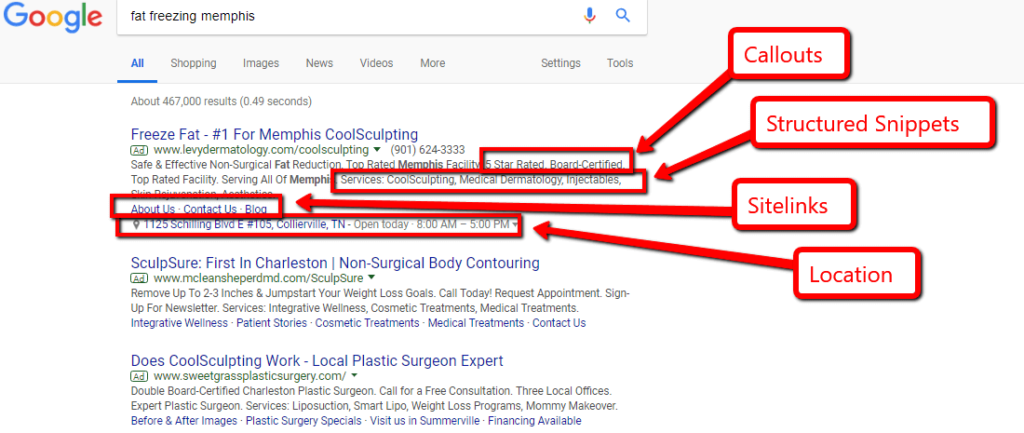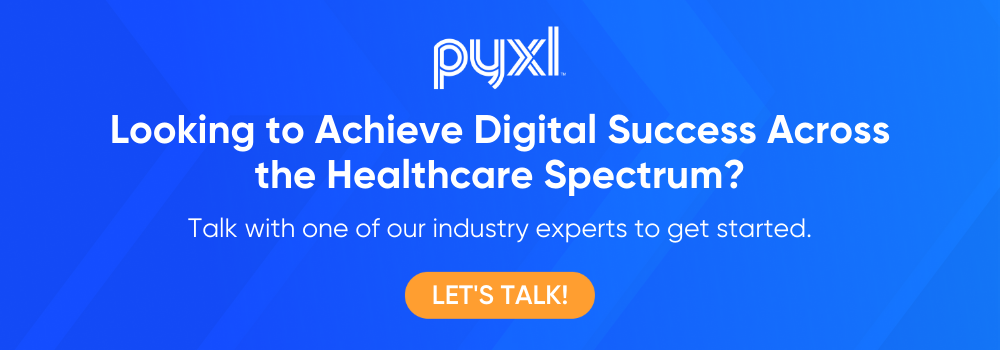Keep Your PPC Healthy: 6 Practical Tips for Healthcare Paid Media
The healthcare industry is ever-changing, much like Google and its ad-platform, Google Ads (formerly Google Adwords—see, even the name changed!). When applying to advertise in healthcare, there are many hoops you have to jump through to ensure your ads aren’t limited. Hoops like HIPAA compliance when relevant, or even signing up on LegitScript for your Google Application to work. But after you do all that’s necessary, you can start running legitimate healthcare paid media campaigns. And, your ads won’t be limited thanks to LegitScript and your approved Google Ads application! It’s important to note that you don’t have to jump through these hoops every time and you could very well see success from limited ads (although it’s not the best practice, I digress).
But, healthcare paid media is extremely important! Organic results are declining for both search and social, and before we know it, everything will rely on paid advertising. The time is approaching when SEO won’t be a popular buzzworthy topic, and ads will evolve so much so that we may not be able to distinguish what’s a promotion and what’s not – you sneaky little advertisers.
Another key factor in paid advertising is that it puts you, the advertiser, in control. If you have the money, you’ll have the ability to decide when, how, and where you show on the Search Engine Results Page (SERP) — especially if your ads are pristine, your content is click-worthy, and your rankings are high.
Why It’s Important
Typically, search ranking is expensive for healthcare. This is largely due to the fact that you and your competitors are bidding on a small pool of highly qualified keywords, and perhaps a larger pool of less qualified keywords. Also, leads generally consist of patients, drug sales, or other expensive demographics that your competition may be willing to pay more for to yield a stronger ROI. So, they pay more for better leads, your CPCs (cost-per-click) increase which causes your cost per conversion to rise, which results in a strongly worded email sent to your Campaign Strategist because your budget isn’t holding as strong as it did last year. Sorry people, even the price of milk has gone up since last year, advertising is no different.
Not convinced of the current state of paid advertising? Here are some cold, dairy-free facts:
According to a recent data compilation by Wordstream, click-through rates in the healthcare industry are 6.7% lower than average PPC search campaigns. Conversely, the costs-per-click on these campaigns are 36% higher than the industry average. Overall, this means the medical industry has a cost-per-action that is $126.29, which is 134% more than the industry average.
While the healthcare industry isn’t at the bottom of the list when it comes to Google Adwords Benchmarks, this industry is ranking lower and paying more than the average PPC search campaign.
How You Can Improve
Optimizing your Google Adwords can seem complicated and there are many variables that need adjusting, but Google Ads is constantly updating its algorithms to provide you with great recommendations that will save you time and reduce future complications. Do your research, don’t rely solely on Google’s recommendations (like enabling Search Partners—don’t do it!!), and test and learn. Below, we’ve included some of the best ways to optimize your healthcare paid media.
ORGANIZE YOUR ACCOUNT
One of the most overlooked yet highly important steps to running a successful Google Ads account is organizing your campaigns, ad groups, and keywords in a way that allows for better optimization, smarter money management, and easier conversion tracking.
Personally, I prefer to set up campaigns first by category like Non-Brand “Type.” For example, if my product was shoes, this would be Non-Brand Shoes and it would house keywords like “shoes for sale” or “sports shoes”. Then I like to further break out campaigns by keyword match type if it’s relevant. So my campaign would now be Non-Brand Shoes Broad Match Modified (or BMM for short) and in it I would only house ad groups with keywords that are broad match modified.
Moving down a layer, I would organize my ad groups into related buckets. Ex. Adgroup: Sports Shoes – keywords: sports shoes, running shoes, etc.
I could go on and on, but hopefully you get a general idea. Proper organization helps maintain focused visibility into your account and highlight where and when problems or successes happen.
PAUSE UNDERPERFORMING KEYWORDS
Keywords that bring in many impressions but few clicks will decrease your click-through rate, increase your spend on lesser-qualified traffic, and lower your ability to maximize ROI and get your conversions (and conversion rate) up. Pausing these keywords will not only save you money but will increase the amount of money that can be spent on your quality keywords.
REVISIT YOUR AD CONTENT
Make sure your ads are relevant to the people searching. I know it sounds intuitive, but the biggest killer of CTR is serving an ad that your consumer isn’t looking for in their search results. If they are searching for physicians, but you’re showing them a copy for digital imaging, they probably won’t click your ad—they could, but the majority won’t. Having keyword-loaded copy is important, but more and more we’re finding it not as important as it used to be. It may still help with quality scores for the overall ranking, but Google doesn’t use your Quality Score to determine ad rank during auctions anymore.
Just be cognizant of what kind of ads you are showing for your keywords, make sure they offer something valuable to the people searching and give them a good offer if you have one.
ADD AD EXTENSIONS
Maximize the amount of information being shared with consumers by adding extensions. The more real estate you can take up on the SERP, the better chances your ad will be clicked. Some extensions are:
- Callouts– short 25 character descriptions to highlight what is being offered.
- Sitelinks– links that populate under your ad to help direct people to landing pages you select.
- Structured snippets – this extension gives you another opportunity to highlight the services you offer or the type of products you offer.

TAKE ADVANTAGE OF CONVERSION TRACKING
Conversion tracking provides you the ability to gain insight on what keywords prompt people to convert. Using this feature also allows google to help optimize your account with the setting “maximize for conversions,” which will show ads to users who are more likely to convert based on those who have previously done so.
CONDUCT A MONTHLY ANALYSIS
The best way to keep your account healthy is to conduct a monthly analysis to see where your ads are succeeding and where they aren’t. Are users finding the solutions they need on your site? How long do they stay? This analysis can give you powerful insight into who is engaging and what you need to change to better target your ads.
TEST AND EXPERIMENT
You’ll never know what works if you don’t test. It can be scary to test when real dollars being spent, but I find you can usually prove a theory in a short amount of time and pivot when needed. Keep an eye on your CTRs and overall volume but, most importantly, focus on your conversions and cost per conversion. If those metrics have huge fluctuations, you might want to pause and re-evaluate.
Google has made it easier for you to experiment with ad copy. They now have responsive ads that mix and match copy provided by you, to pick the best mix and show ads that are more likely to get more clicks.
Launching and maintaining healthy PPC campaigns requires more than a one-time setup. The best way to ensure success is to analyze your results and update your strategy, audience targeting and ad copy on a regular basis.
If all of the Google Ad this, PPC that is still jibberish to you- don’t worry! Check out our whitepaper on understanding how to leverage your healthcare business as a healthcare paid media leader. Even further, feel free to contact the Pyxl team for assistance in developing a strong Google Ad campaign, making your healthcare organization more available to the patients who need you most.
Updated: Jul 18, 2024
 Kati Terzinski
Kati Terzinski
 Erin Murray
Erin Murray